Beginnings – Not Just For Page One
Terry Odell

Image by Alexandra_Koch from Pixabay
I belong to a small online critique group. We’ve been together about 15 years now, so we’re in a combination beta-reader/critique partner relationship. Our process is to send a chapter at a time, with no real schedule. This means there are times when we’ll be seeing submissions every few days (as deadlines approach) or every couple of weeks.
Even when we’re moving “quickly” and sending subs every few days, this isn’t how we hope readers are going to be reading the final product. Much as we hate to admit that not every reader starts at page 1 and doesn’t put the book down until “The End”, it might be several days before a reader picks up the book again.
Most readers use chapter and scene breaks as stopping points. One thing my partners and I are aware of is how it’s critical to ground the reader at the start of each chapter, scene, or POV switch. It’s also the most common piece of feedback we give each other. Being aware and executing don’t always go hand in hand.
Unlike Chapter One, Page One, new chapters don’t have the same compelling “hook the reader” conventions. They should already be vested in the characters and the conflicts to want to keep reading.
How do you make sure you’re not creating those what’s going on? moments? I’m borrowing from a post I did several years ago on Transitions. You need to ground the reader in the who, where, and when.
You should be able to work all of these into the first sentence or two in the new scene. Action beats are your friend. If the previous chapter ended with a question, it can’t hurt to remind the reader what the question was. Subtlety is your friend here. You don’t want the “moving right along” reader to feel that you’re being repetitive or casting doubts on their intelligence.
If you’re writing a single POV, the task is easier, because odds are, your reader is pretty sure whose head they’re in.
An example of the end of Chapter 1 in Deadly Options:
Gordon turned to McDermott. “Vicky, what do we know? Angie called, said you were arresting Megan Wyatt. Is that true?”
“Not exactly,” she said.
There’s the hope that readers will turn the page to find out what Vicky McDermott knows. But what if they’re reading while waiting for a doctor’s appointment, and they’re called into the exam room right there? They use a bookmark, and who knows when they’ll be able to spare the time to read again.
My approach to grounding the reader is starting Chapter 2 with this:
“Either she’s under arrest or she isn’t, Vicky,” Gordon said. “Not exactly isn’t an acceptable answer.”
“Sorry, Chief. She’s not under arrest, but I can see how Angie might have interpreted it that way when I put Megan in a private room.”
We see the speaker is Gordon, and the question is repeated/paraphrased as a reminder to the reader. Using the other character names helps as well.
My romantic suspense books use two POV characters. A chapter might end with a nice hook for one protagonist, but he’s not taking center stage again until after the other protagonist has her turn. Here, it’s even more important to reground the reader. That requires a bit of a leapfrog mentality from the reader. If my characters weren’t together in the last scene, then things have happened to character A while we were with character B. Grounding becomes critical.
An example from Nowhere to Hide, where Graham is the male protagonist, a cop who wants to move up in the department. He’s been away from center stage for several scenes.
Graham finished filing his reports, surprised to see it was four-thirty. Instead of going home, he drove to Central Ops. Roger Schaeffer in CID might let him poke around a little. The lieutenant seemed to be one of the few who thought Graham had a shot at the CID spot. His recommendation could make the difference.
For this scene, I opened by using Graham’s name (who), and also a time reference (when). The where, Central Ops, is mentioned. Also, by showing something only Graham can be aware of (his surprise at the time), we’ve established it’s his POV scene. If there was any doubt, the rest of the paragraph is internal monologue, thoughts only Graham would know.
Another caveat: Be very careful if you’re opening a chapter with a secondary/non POV character doing something. You need to make sure your protagonist’s thoughts, actions, or dialogue are clearly theirs. Also if there’s been a time jump.
All right TKZ peeps. Have you run across examples of ways authors keep readers grounded over scenes and chapters? Or places where you’ve been confused? Solutions you use?
Note: I’m heading out of town for a while tomorrow. I’ll try to respond to today’s comments. Don’t know how much internet access/time I’ll have on the road.
Now Available: Cruising Undercover
It’s supposed to be a simple assignment aboard a luxury yacht, but soon, he’s in over his head.
 Terry Odell is an award-winning author of Mystery and Romantic Suspense, although she prefers to think of them all as “Mysteries with Relationships.”
Terry Odell is an award-winning author of Mystery and Romantic Suspense, although she prefers to think of them all as “Mysteries with Relationships.”


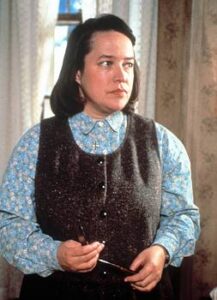

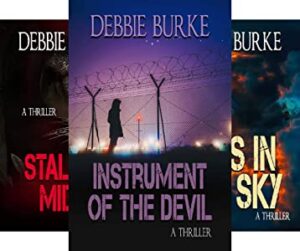


 It’s about time we talked about Casablanca. This classic consistently shows up at the top of favorite movie lists. It has perhaps the most famous ending line of all time. And of course it’s got Bogart, Ingrid Bergman, Paul Henreid, and Claude Rains—not to mention Peter Lorre and Sydney Greenstreet and a host of great Warner Bros. character actors.
It’s about time we talked about Casablanca. This classic consistently shows up at the top of favorite movie lists. It has perhaps the most famous ending line of all time. And of course it’s got Bogart, Ingrid Bergman, Paul Henreid, and Claude Rains—not to mention Peter Lorre and Sydney Greenstreet and a host of great Warner Bros. character actors.


 When I was growing up, immersed in dreams of one day becoming a writer, I romanticized what the process must be like. Where would one go to imagine new worlds and create new adventures? Movies romanticized the whole process, and I bought into it. Then I saw this now famous picture of a then less-famous Stephen King in his writing space. It seemed so . . . ordinary. Yet at the same time it seemed very special. The dog under his feet is a nice touch. This is a guy with a job. And his creative space is . . . an office. Just an office. But of course, it’s more than that. It’s Stephen King’s office. (As you’ll see below, it turns out that I was not the only budding young writer who was impressed by the photo.)
When I was growing up, immersed in dreams of one day becoming a writer, I romanticized what the process must be like. Where would one go to imagine new worlds and create new adventures? Movies romanticized the whole process, and I bought into it. Then I saw this now famous picture of a then less-famous Stephen King in his writing space. It seemed so . . . ordinary. Yet at the same time it seemed very special. The dog under his feet is a nice touch. This is a guy with a job. And his creative space is . . . an office. Just an office. But of course, it’s more than that. It’s Stephen King’s office. (As you’ll see below, it turns out that I was not the only budding young writer who was impressed by the photo.) Our move to West Virginia presented a unique opportunity to design an office as an office–as opposed to a purloined bedroom. Now that I think about it, I suppose there’s not a lot of difference between the two. I wanted lots of light and direct access to the outdoors. That door leads to a deck that overlooks the woods. The orange helmet on the left end of the bookcase belonged to my father. A closer look will show that it’s quite banged up from the helicopter crash he survived on the deck of the USS Forrestal in 1959. The two yellow helmets are mine from the two jurisdictions where I ran fire and rescue. (I had to turn my white lieutenant’s helmet back in when I left.) Since the house is now run by a 12-pound ball of fur named Kimber, chew toys and water bowls litter the floor of every room.
Our move to West Virginia presented a unique opportunity to design an office as an office–as opposed to a purloined bedroom. Now that I think about it, I suppose there’s not a lot of difference between the two. I wanted lots of light and direct access to the outdoors. That door leads to a deck that overlooks the woods. The orange helmet on the left end of the bookcase belonged to my father. A closer look will show that it’s quite banged up from the helicopter crash he survived on the deck of the USS Forrestal in 1959. The two yellow helmets are mine from the two jurisdictions where I ran fire and rescue. (I had to turn my white lieutenant’s helmet back in when I left.) Since the house is now run by a 12-pound ball of fur named Kimber, chew toys and water bowls litter the floor of every room. Here it is from a different angle. This is messier than it normally is, but a pinky swear is a pinky swear. Note the studio grade microphone and the webcam–a new bit of ubiquity in office photos, I’ve found. All of those Gilstrap books stacked on the far end of the bookcase are the background for Zooming and YouTube videos (when I start shooting them again). The opened journal you see on the desk is one of many that I have stacked around the place (each novel gets a new journal). That’s where I scratch my way through difficult parts of the story that are somehow resistant to being typed. That green chair in the corner used to belong to me. Now it’s Kimber’s day bed and she gets very annoyed if I move the blanket from where she left it.
Here it is from a different angle. This is messier than it normally is, but a pinky swear is a pinky swear. Note the studio grade microphone and the webcam–a new bit of ubiquity in office photos, I’ve found. All of those Gilstrap books stacked on the far end of the bookcase are the background for Zooming and YouTube videos (when I start shooting them again). The opened journal you see on the desk is one of many that I have stacked around the place (each novel gets a new journal). That’s where I scratch my way through difficult parts of the story that are somehow resistant to being typed. That green chair in the corner used to belong to me. Now it’s Kimber’s day bed and she gets very annoyed if I move the blanket from where she left it. When we moved out of Fort Lauderdale five years ago, it meant big downsizing. As some wag said (might have been George Carlin): You spend the first half of your life accumulating stuff and the second half getting rid of it. We now live half the year in Tallahassee and half in Traverse City, Michigan. We don’t have the luxury of an extra “office” space anymore, so I store everything on line and cart my laptop around wherever the spirit moves me. Often it’s the sofa, but more likely my local coffee shop or after 4, the Traverse City Whiskey Co. where they make a mean whiskey sour. On spectacular days like today, the balcony will do.
When we moved out of Fort Lauderdale five years ago, it meant big downsizing. As some wag said (might have been George Carlin): You spend the first half of your life accumulating stuff and the second half getting rid of it. We now live half the year in Tallahassee and half in Traverse City, Michigan. We don’t have the luxury of an extra “office” space anymore, so I store everything on line and cart my laptop around wherever the spirit moves me. Often it’s the sofa, but more likely my local coffee shop or after 4, the Traverse City Whiskey Co. where they make a mean whiskey sour. On spectacular days like today, the balcony will do. I’m fortunate to have a bedroom dedicated to me. This is my workspace, which doesn’t show my cluttered closet space or bookshelves. The desk is also a little less cluttered than usual, since the request for the photo came on Friday, and I clear my desk on Thursday for the housekeeper. The stacks of paper next to the printer and behind the monitor represent my method of ‘housekeeping.’ The stacks will eventually topple over, and I’ll attempt to separate the wheat from the chaff.
I’m fortunate to have a bedroom dedicated to me. This is my workspace, which doesn’t show my cluttered closet space or bookshelves. The desk is also a little less cluttered than usual, since the request for the photo came on Friday, and I clear my desk on Thursday for the housekeeper. The stacks of paper next to the printer and behind the monitor represent my method of ‘housekeeping.’ The stacks will eventually topple over, and I’ll attempt to separate the wheat from the chaff.
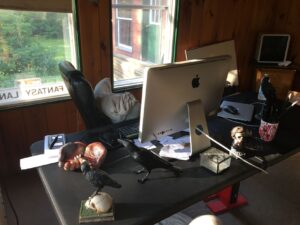 Attached are two photos of my office from different angles. The Holy Hands on my desk were made and blessed by a Cherokee chief. They hold tiny replicas of my Mayhem Series. Both gifts from a couple (readers) who said I touched their lives.
Attached are two photos of my office from different angles. The Holy Hands on my desk were made and blessed by a Cherokee chief. They hold tiny replicas of my Mayhem Series. Both gifts from a couple (readers) who said I touched their lives.  Most of the crows, as well as the crow dreamcatcher hanging above, were also gifts from readers. All mean a lot to me. Constant reminders of why I write.
Most of the crows, as well as the crow dreamcatcher hanging above, were also gifts from readers. All mean a lot to me. Constant reminders of why I write. Here’s my office. I’m most comfortable surrounded by books, and many of these mysteries are signed by friends. The box with the white rug is for my cat, Vanessa. She “helps” while I work.
Here’s my office. I’m most comfortable surrounded by books, and many of these mysteries are signed by friends. The box with the white rug is for my cat, Vanessa. She “helps” while I work. Here’s a shot of my mind lab. Brief description: “My creative place is a combination of old and new. Side-by-side, I have a Windows 11 laptop with audio/visual recording devices next to a retro 1920s private detective office with stuff like a pristine vintage typewriter and a cool rotary phone that’s tweaked to work in the digital age. Fun place. BTW, that filing cabinet is stuffed full of books.”
Here’s a shot of my mind lab. Brief description: “My creative place is a combination of old and new. Side-by-side, I have a Windows 11 laptop with audio/visual recording devices next to a retro 1920s private detective office with stuff like a pristine vintage typewriter and a cool rotary phone that’s tweaked to work in the digital age. Fun place. BTW, that filing cabinet is stuffed full of books.”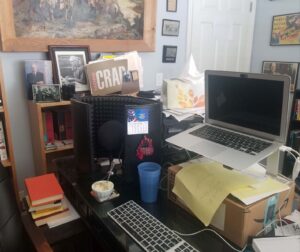 My desk, with microphone and sound foam. To the left, pics of Stephen King (with legs on desk), Ed McBain, and John D. MacDonald, all telling me to stop whining and write. My coffee mug with WRITER on it, which I bought a few days after I decided I had to try to become a writer. And a file folder for my first drafts.
My desk, with microphone and sound foam. To the left, pics of Stephen King (with legs on desk), Ed McBain, and John D. MacDonald, all telling me to stop whining and write. My coffee mug with WRITER on it, which I bought a few days after I decided I had to try to become a writer. And a file folder for my first drafts.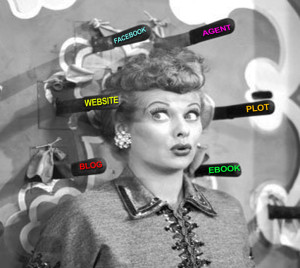
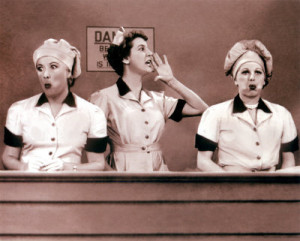
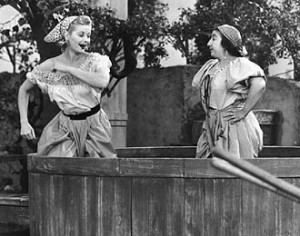
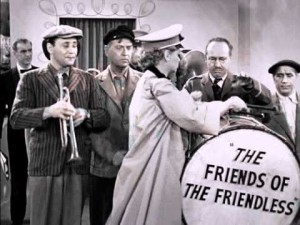
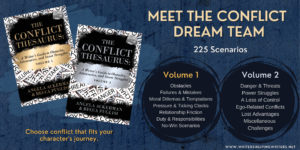 In story terms, a villain is a person, entity, or force who is cruel, evil, or malicious enough to wish the protagonist harm. Rather than simply blocking a goal or interfering with the hero’s plan, a villain causes suffering, making it vital for them to be conquered by the protagonist. Clarice must find and defeat Buffalo Bill if she wants to rise above her past and become a great FBI agent (
In story terms, a villain is a person, entity, or force who is cruel, evil, or malicious enough to wish the protagonist harm. Rather than simply blocking a goal or interfering with the hero’s plan, a villain causes suffering, making it vital for them to be conquered by the protagonist. Clarice must find and defeat Buffalo Bill if she wants to rise above her past and become a great FBI agent (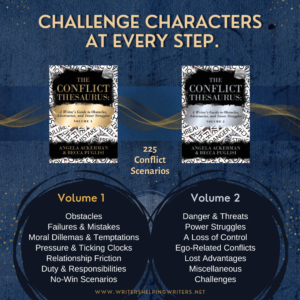 Like the hero, the villain has an overall objective, and they’re willing to do anything within their moral code to achieve it. When their goal is diametrically opposed to the hero’s, the two become enemies in a situation where only one can succeed.
Like the hero, the villain has an overall objective, and they’re willing to do anything within their moral code to achieve it. When their goal is diametrically opposed to the hero’s, the two become enemies in a situation where only one can succeed.  Becca Puglisi is an international speaker, writing coach, and bestselling author of The Emotion Thesaurus and other resources for writers. Her books have sold over 900,000 copies and are available in multiple languages, are sourced by US universities, and are used by novelists, screenwriters, editors, and psychologists around the world. She is passionate about learning and sharing her knowledge with others through her
Becca Puglisi is an international speaker, writing coach, and bestselling author of The Emotion Thesaurus and other resources for writers. Her books have sold over 900,000 copies and are available in multiple languages, are sourced by US universities, and are used by novelists, screenwriters, editors, and psychologists around the world. She is passionate about learning and sharing her knowledge with others through her